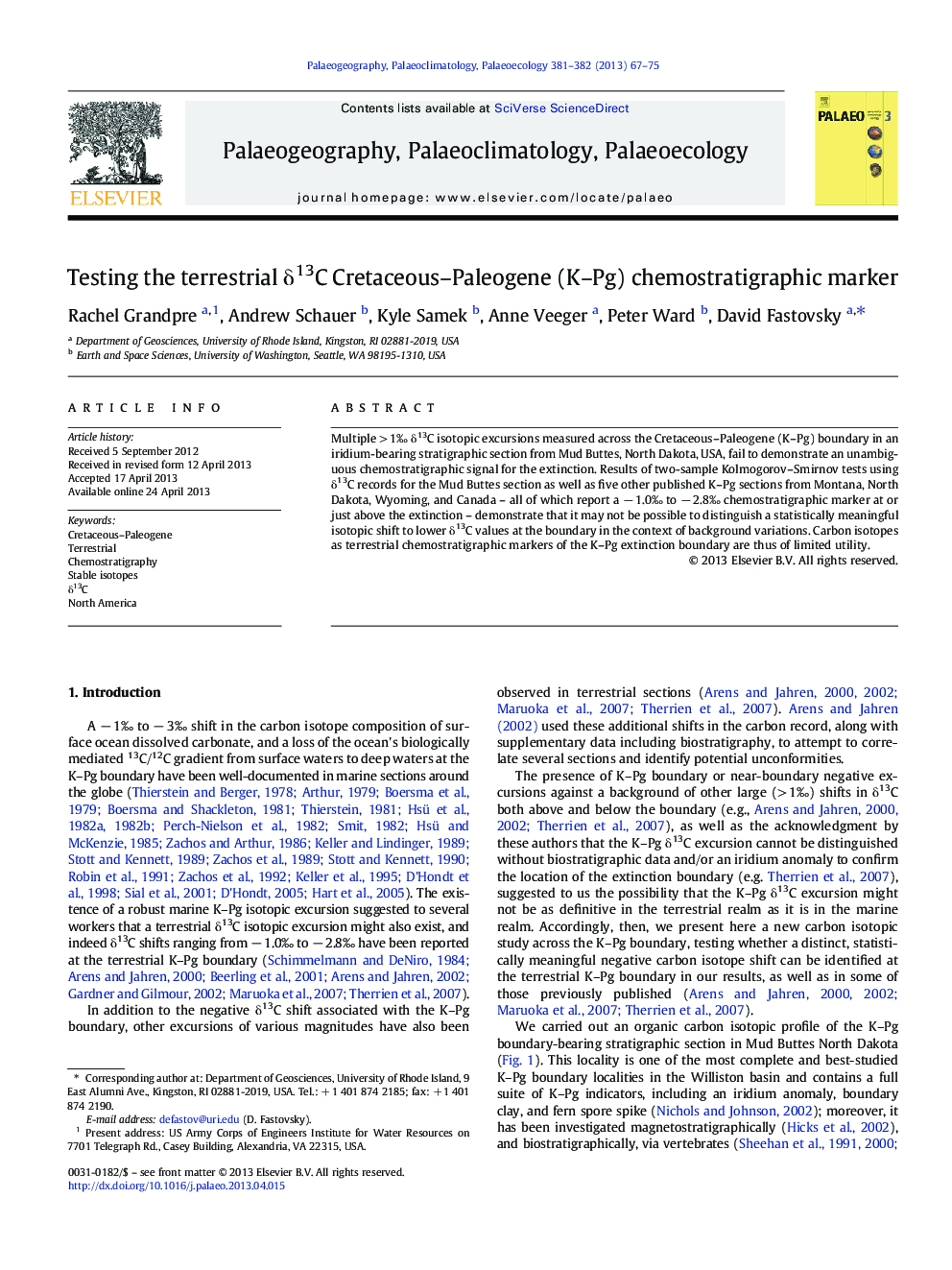| کد مقاله | کد نشریه | سال انتشار | مقاله انگلیسی | نسخه تمام متن |
|---|---|---|---|---|
| 4466534 | 1622206 | 2013 | 9 صفحه PDF | دانلود رایگان |

• A δ13C-based terrestrial chemostratigraphic K/Pg marker was proposed in N. Am.
• We analyzed the C-isotopic signature of the K/Pg boundary in Mud Buttes, ND, USA, and failed to obtain a definitive marker.
• The K/Pg excursion is not statistically unique in our data and in published reports.
• A δ13C chemostratigraphy alone cannot resolve the terrestrial K/Pg boundary.
Multiple > 1‰ δ13C isotopic excursions measured across the Cretaceous–Paleogene (K–Pg) boundary in an iridium-bearing stratigraphic section from Mud Buttes, North Dakota, USA, fail to demonstrate an unambiguous chemostratigraphic signal for the extinction. Results of two-sample Kolmogorov–Smirnov tests using δ13C records for the Mud Buttes section as well as five other published K–Pg sections from Montana, North Dakota, Wyoming, and Canada – all of which report a − 1.0‰ to − 2.8‰ chemostratigraphic marker at or just above the extinction – demonstrate that it may not be possible to distinguish a statistically meaningful isotopic shift to lower δ13C values at the boundary in the context of background variations. Carbon isotopes as terrestrial chemostratigraphic markers of the K–Pg extinction boundary are thus of limited utility.
Journal: Palaeogeography, Palaeoclimatology, Palaeoecology - Volumes 381–382, July 2013, Pages 67–75